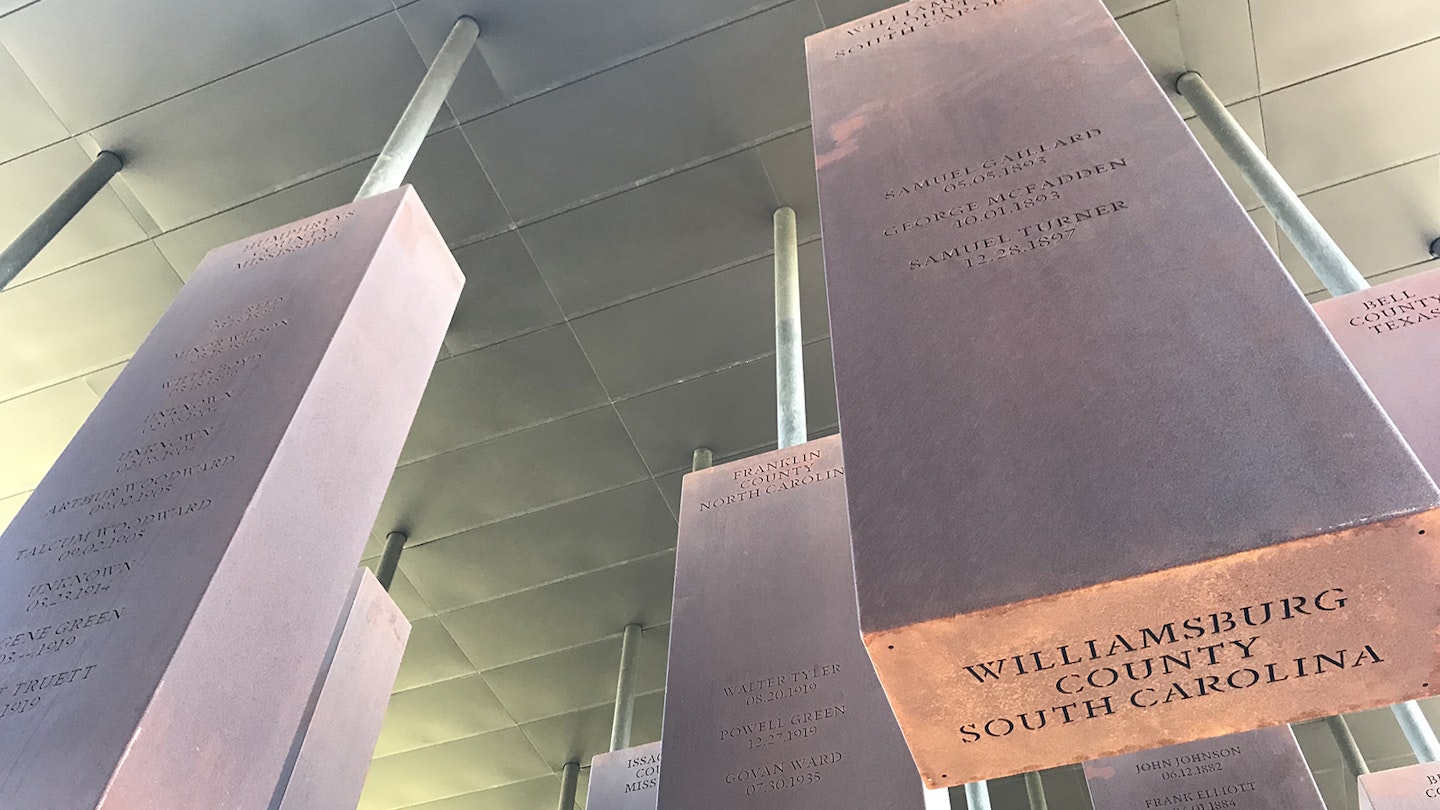Discover the Legacy Museum and National Memorial for Peace and Justice in Montgomery, Alabama
The national spotlight is on a city that was once among America’s most active slave-trading hubs: Montgomery, Alabama has opened the first-ever museum and memorial to the victims of lynching and enslavement in the United States. A visit to the city is an opportunity to confront America’s racial divide. As they engage with this history, visitors may find both motivation and will to continue moving forward.
The Legacy Museum: From Enslavement to Mass Incarceration
‘You are standing on a site where enslaved people were warehoused.’
There’s no sugar-coating history at The Legacy Museum. These words painted in white on the lobby’s brick walls set the tone for what’s to come. This museum, along with the associated Memorial to Peace and Justice, challenges visitors to acknowledge past injustices and their echoes in the present – not just in Alabama, but across America.
In 1820, Alabama was home to 41,879 slaves. By 1860, that population swelled to more than 435,000, among the largest populations of enslaved black people in America. That year, Alabama’s capital city had more slave-trading spaces than churches and hotels. Montgomery became a hub for the slave trade, benefitting from easy transport via railroads and the nearby Alabama River.
Exploring the Museum’s Structure and Design
The Legacy Museum is intentionally located near the transit that facilitated the slave trade, in a building where black people were once stored with livestock and cotton. Like the neighboring memorial, the Legacy Museum was curated and created by the Montgomery-based nonprofit Equal Justice Initiative, which advocates for communities affected by poverty and inequality. The 11,000-sq-ft facility employs a variety of tools to guide visitors through this important history.
Understanding the Impact of Enslavement
As visitors leave the lobby, they descend into the darkness of slave pens. In each cell, a projected video of an enslaved person shares an individual experience, allowing visitors to understand the multifaceted impact of the slave trade.
After exiting the slave pens, a timeline of facts, quotes, and images demonstrates how a history of enslavement continues to result in racial disparity, linking slavery through the Jim Crow era to modern mass incarceration.
The National Memorial for Peace and Justice
Slavery was built on a belief in the inherent superiority of white people over those with darker skin. After the 13th amendment outlawed slavery in 1865, many former slave owners struggled to accept that their former property now merited equal treatment.
For over 80 years, the practice of lynching served as a brutal means for whites to assert dominance over African American communities nationwide. Such acts were often carried out publicly. The National Memorial for Peace and Justice echoes this atmosphere, framed as a square, designed to provoke thought and reflection.
Engaging with History Through Sculpture
As visitors enter the Memorial, they encounter rows of steel columns, each engraved with a county or state name along with the names of those lynched and the corresponding dates. The display invites reflection on the pain and memories of those subjected to violence without justice.
This powerful engagement serves as an invitation for visitors to reflect on their own understanding of justice and memory within the context of America’s complex history.
Complementing Montgomery’s Historical Narrative
The Legacy Museum and the National Memorial are only part of Montgomery’s rich historical tapestry. The First White House of the Confederacy provides insights into life during the Confederate States of America, while the Museum of Alabama offers a comprehensive overview of the state’s history from the 1700s onward, covering key events such as Alabama’s role in the Civil Rights movement.
Reflecting on Civil Rights
Pause for reflection at the Civil Rights Memorial, a testament to the struggles for justice. Engraved with names and events from the civil rights movement, it serves as a reminder of the ongoing fight against inequality.
Plan Your Visit
Exploring the Equal Justice Initiative sites can easily fill a day, making an overnight stay in Montgomery advisable. Consider staying at hotels such as The Renaissance Montgomery Hotel and Spa or the DoubleTree by Hilton, both conveniently located near the museum and the Riverfront district. For a more intimate experience, Red Bluff Cottage Bed & Breakfast offers cozy accommodations.





